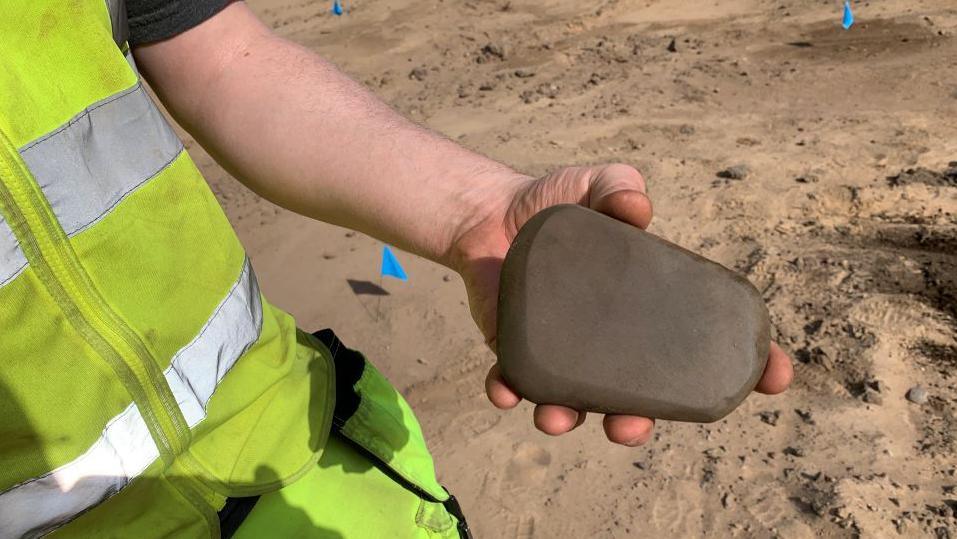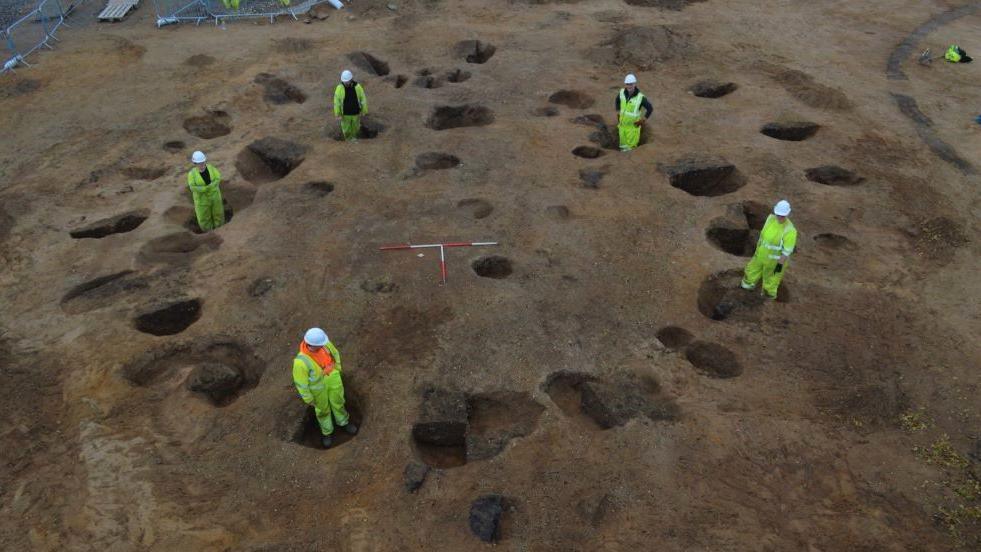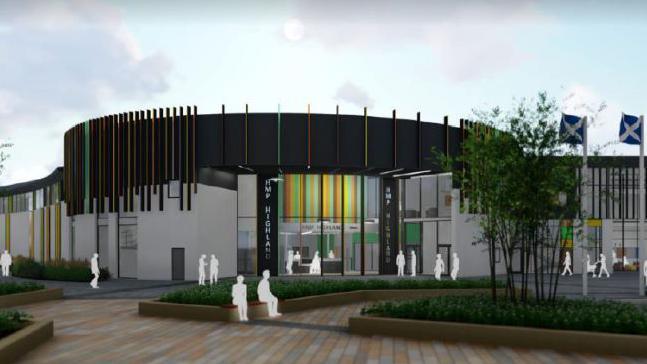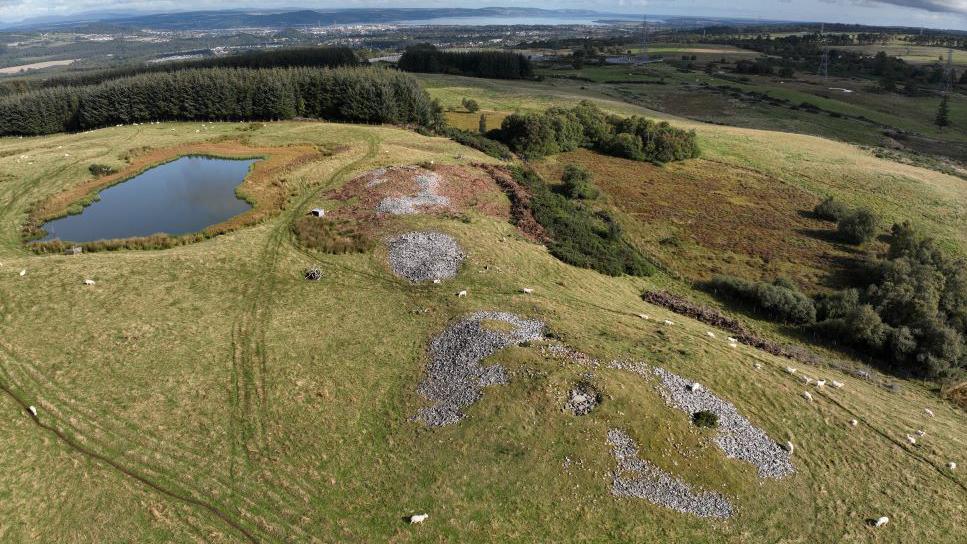Prehistoric settlement uncovered at new prison site

Finds made at the site of a new prison in Inverness include whetstones
- Published
A 2,000 year old prehistoric settlement has been uncovered at the site of a new prison.
Evidence of 16 roundhouses were discovered in an excavation carried out as part of a first phase of development of HMP Highland in Inverness.
Archaeologists said the settlement was occupied in the Iron and Bronze ages.
They said some finds, including clay moulds and copper-alloy material, could be 3,000 years old and possibly used for making swords.
Remains of the roundhouses included holes where timber posts were fitted to support "substantial" hut buildings.
Archaeologists said the interiors of some of the houses had been protected by palisade fencing.
A variety of prehistoric artefacts were found, including metal artefacts of iron and copper-alloy, stone whetstones for sharpening tools and querns for grinding grain.
Pottery and worked flint were also uncovered.

Archaeologists standing in post holes for the timbers of a roundhouse

Sixteen roundhouses were found at the site
AOC Archaeology Group said it worked alongside contractors from UBCivils and Balfour Beatty to ensure careful excavation of extensive buried remains.
The excavation was done on behalf of the Scottish Prison Service (SPS).
The prison site sits within a much larger archaeological landscape where previously nationally significant finds have been found at Culduthel, Slackbuie and West Link Road.
AOC’s Mary Peteranna said the latest dig was a team effort.
"The collaboration was made possible by the support of Scottish Prison Service," she said.
"They facilitated the process of safeguarding the archaeology on the site and have been fully supportive of presentation of the results so that it is available for the public.
"This is a truly important part of the cultural heritage of Inverness."
Lorraine Roughan, SPS project executive for HMP Highland, said: "This discovery encapsulates the importance of the site to the community of Inverness, both historically and in the present day."

A number of archaeological finds were made at the prison site
HMP Highland will replace Inverness Prison, which is more than 120 years old, and will have capacity for 200 prisoners.
The cost of the new prison is expected to be four times more than originally estimated and completed six years later than planned.
Related topics
- Published5 April 2024

- Published26 September 2023

- Published14 March 2022
